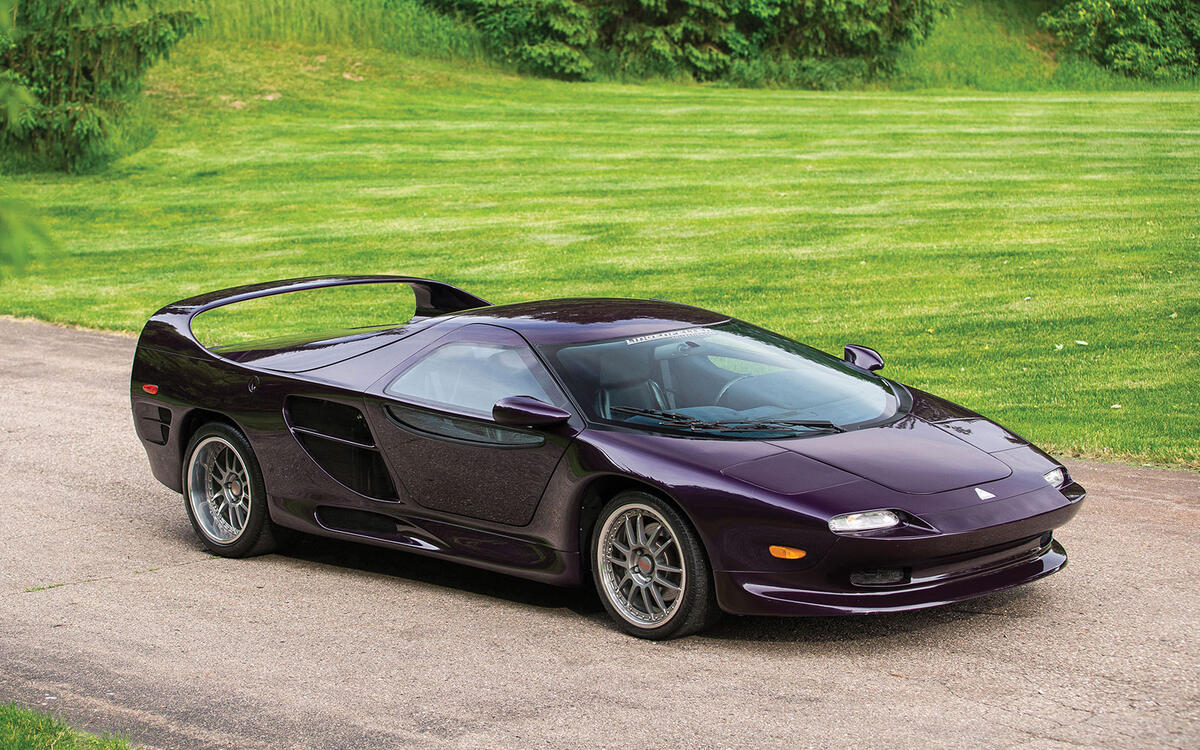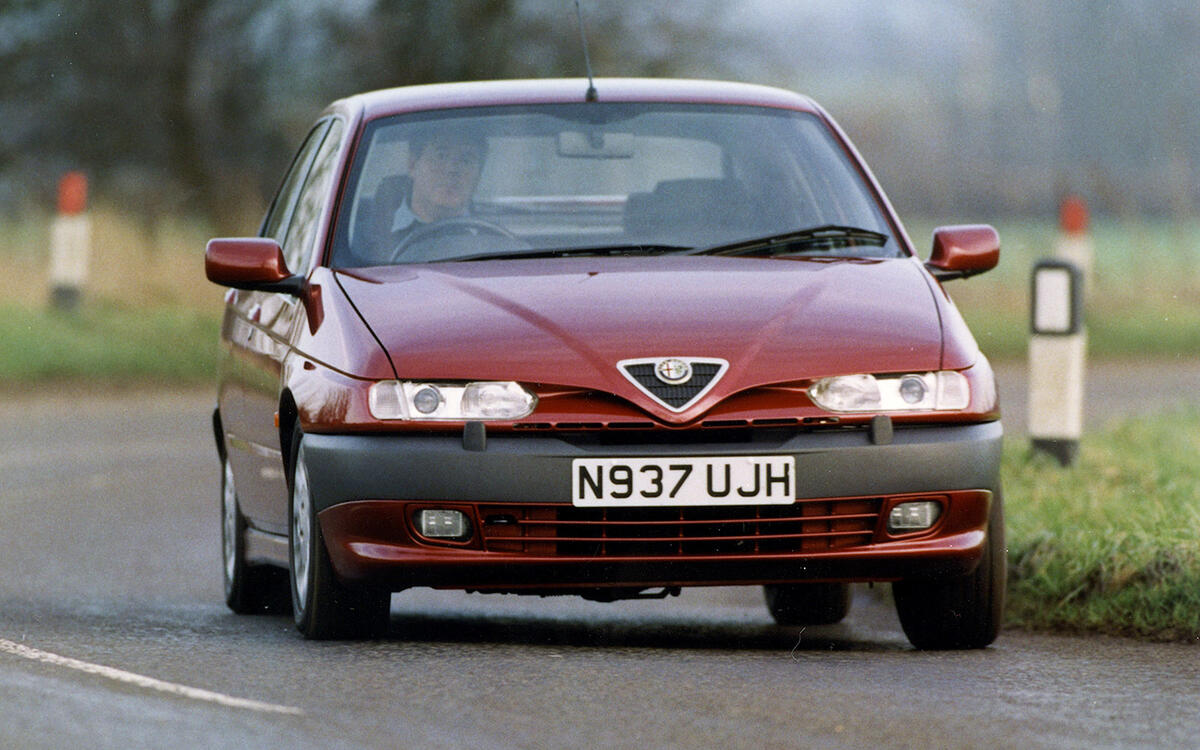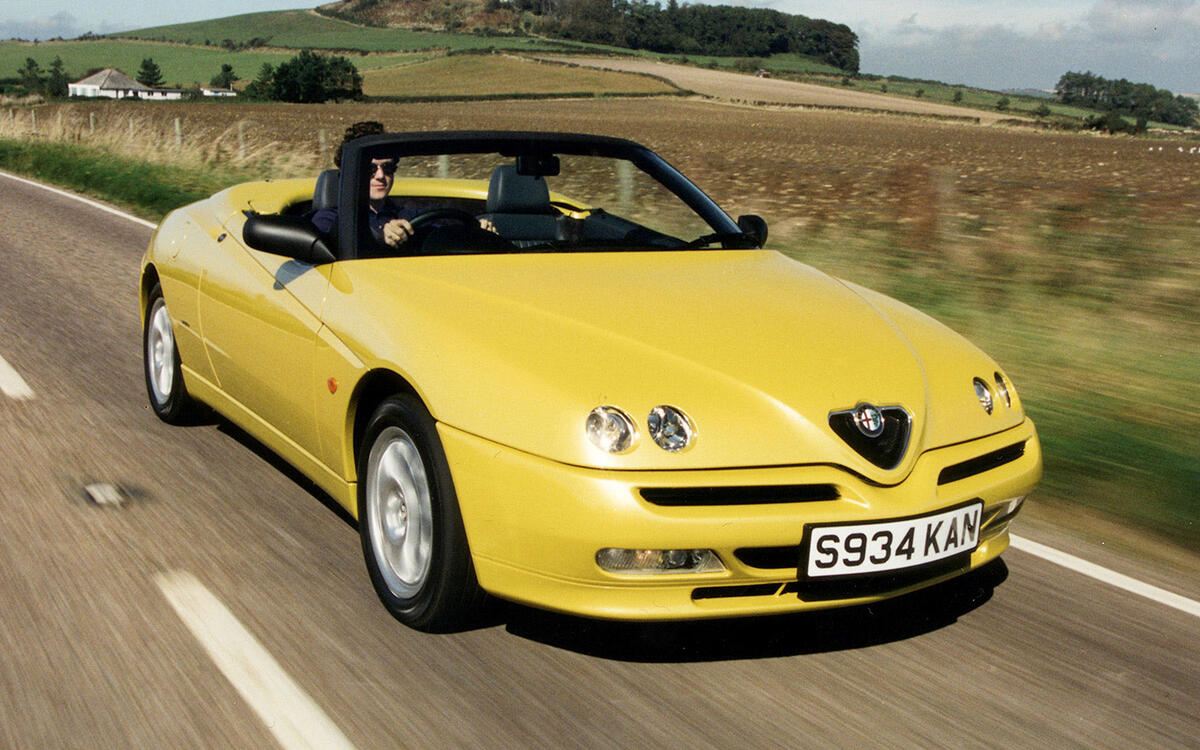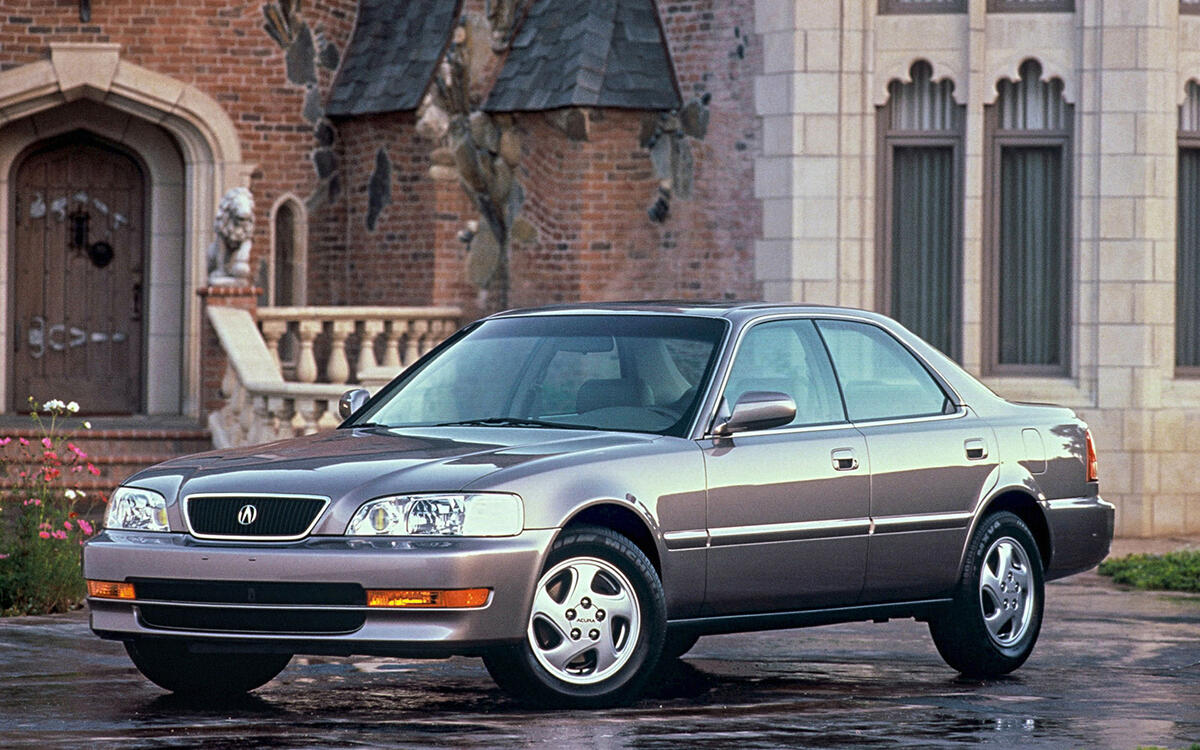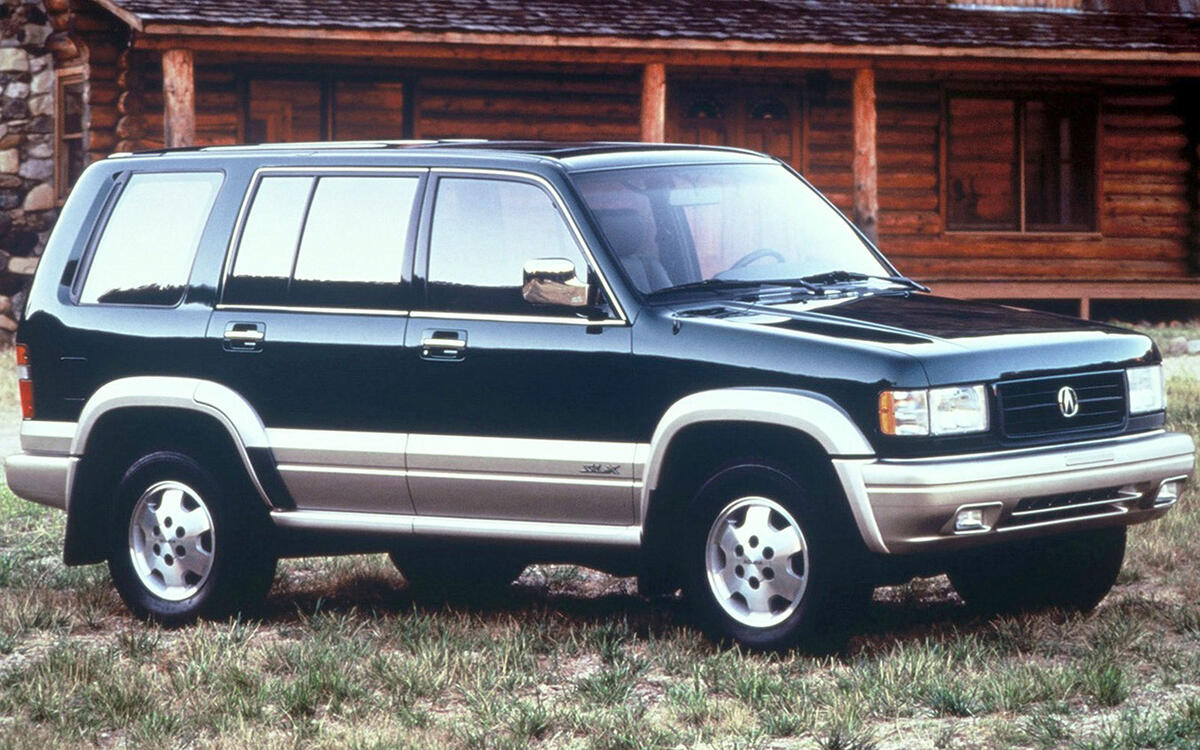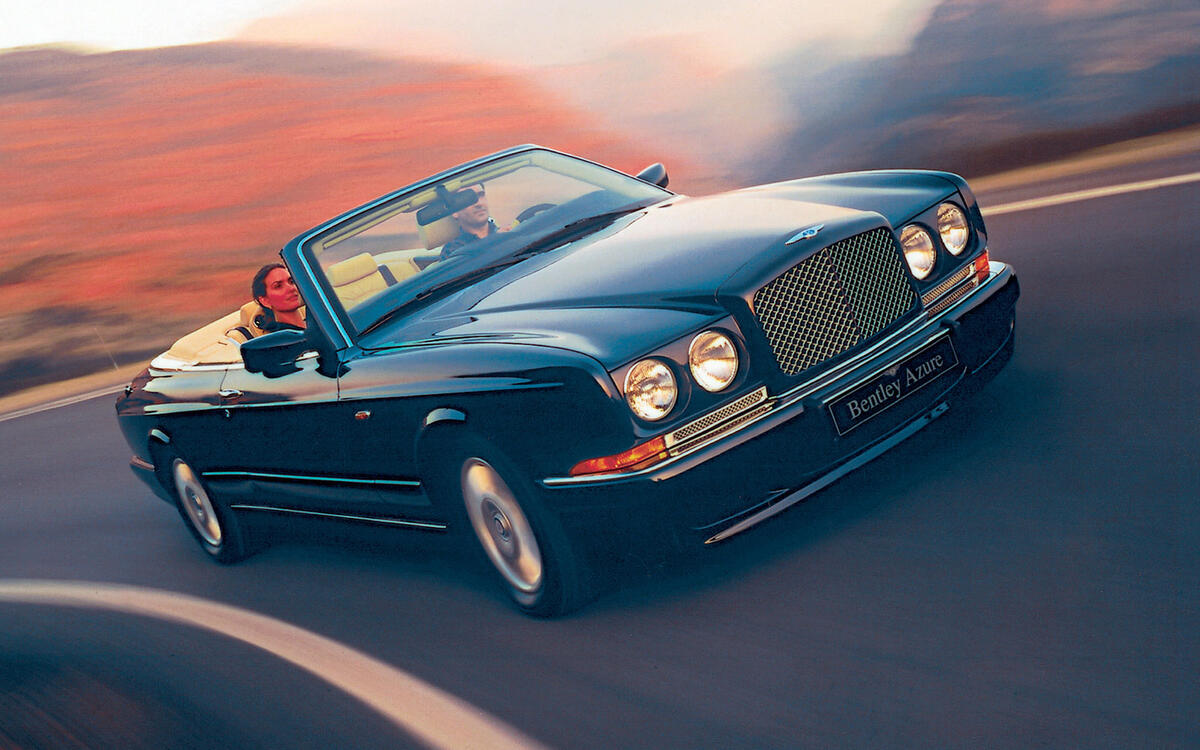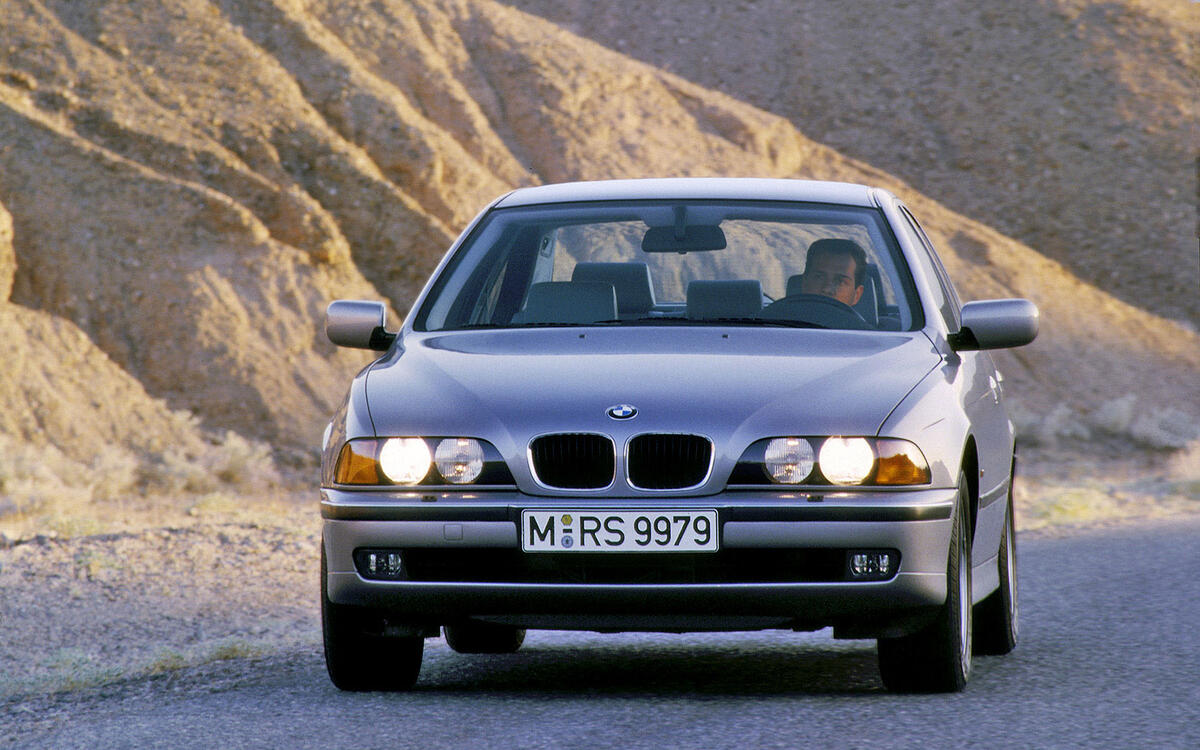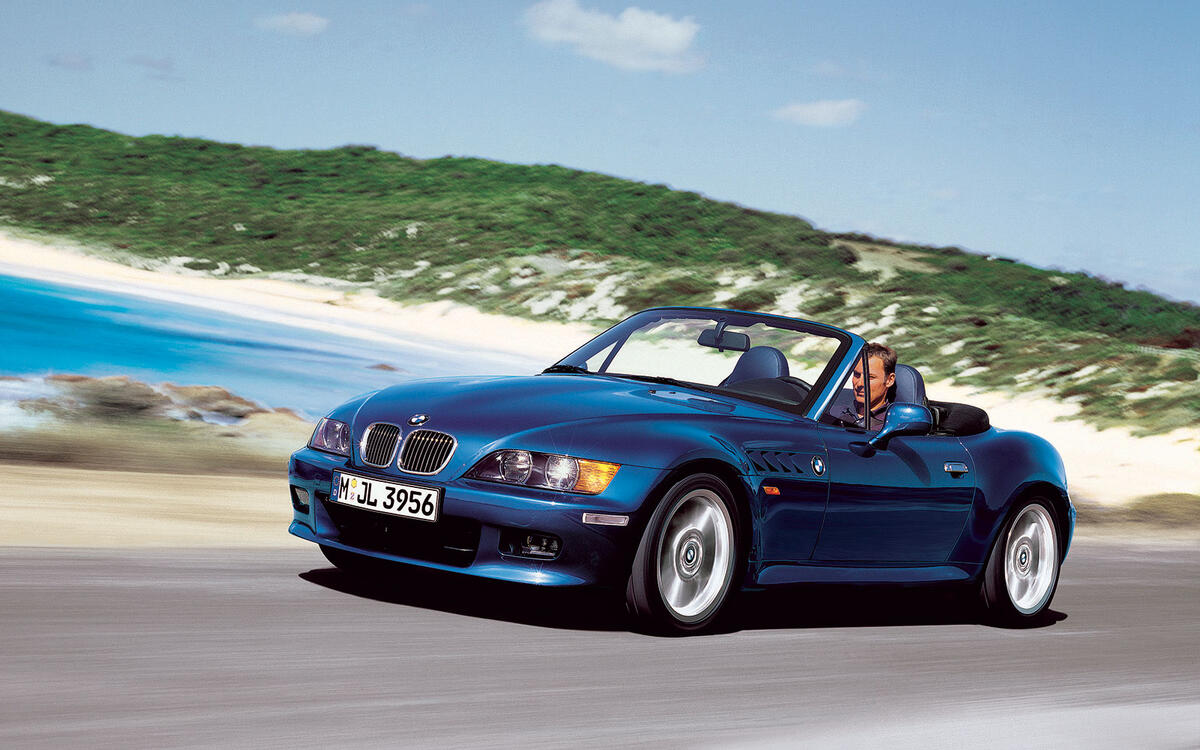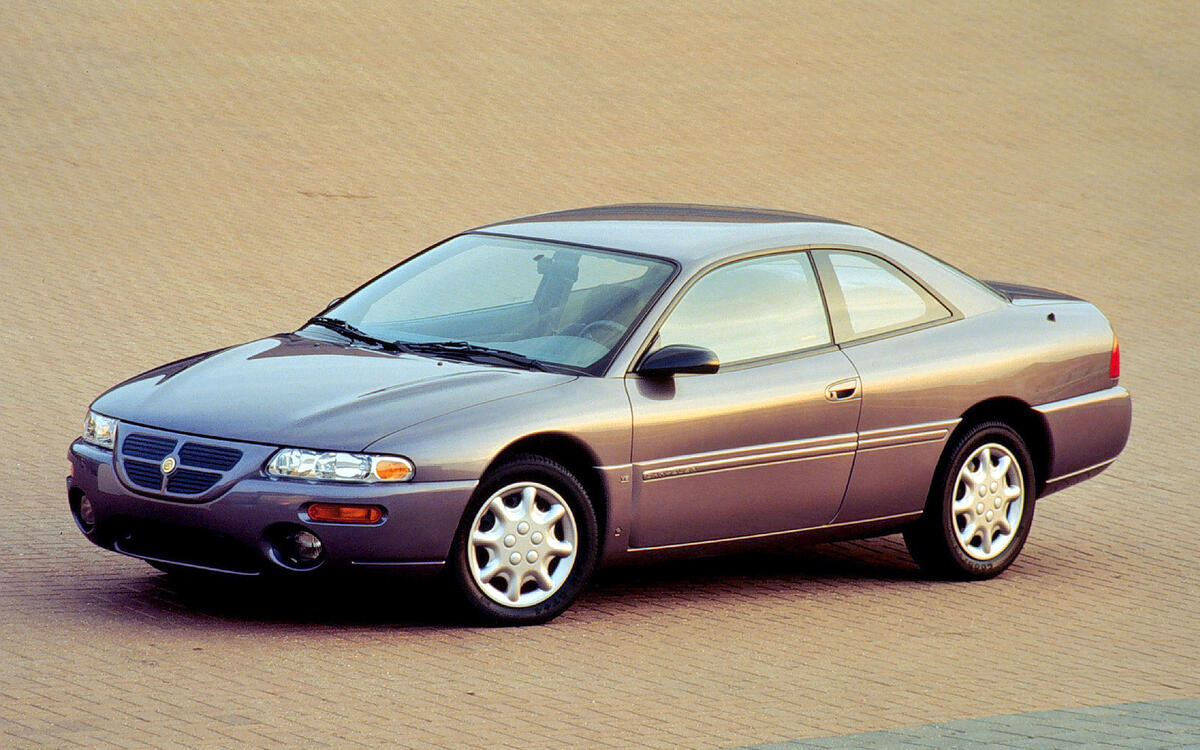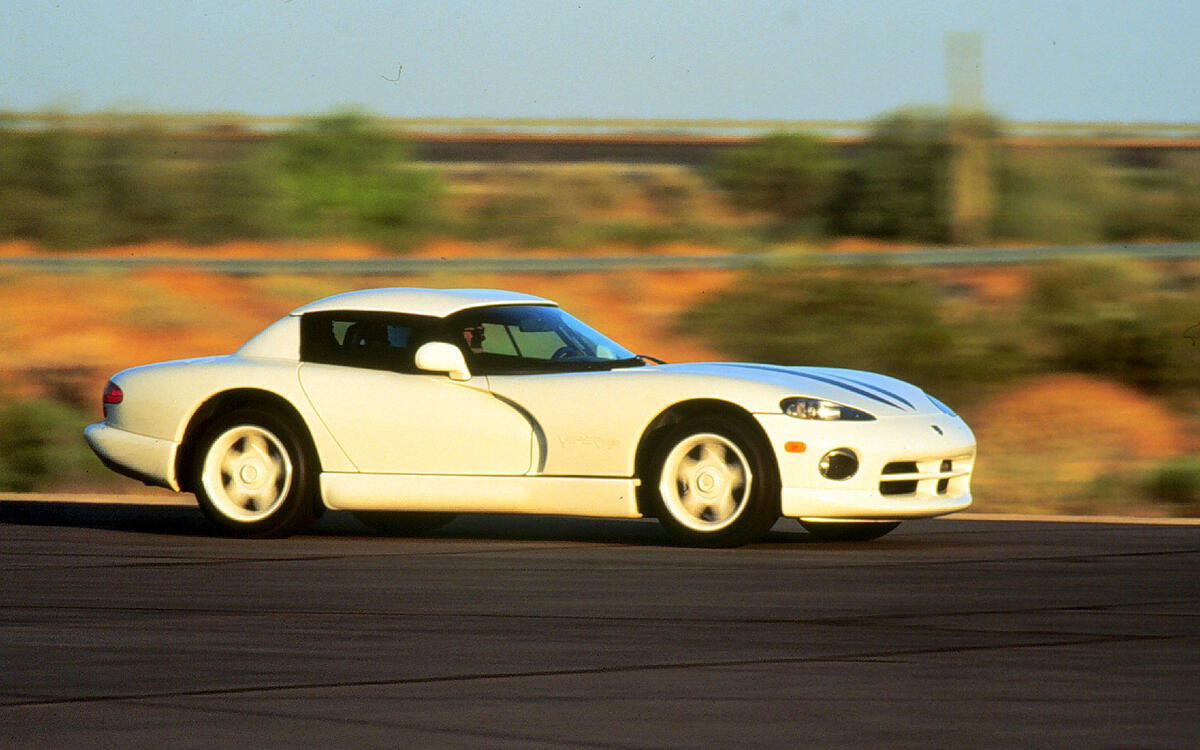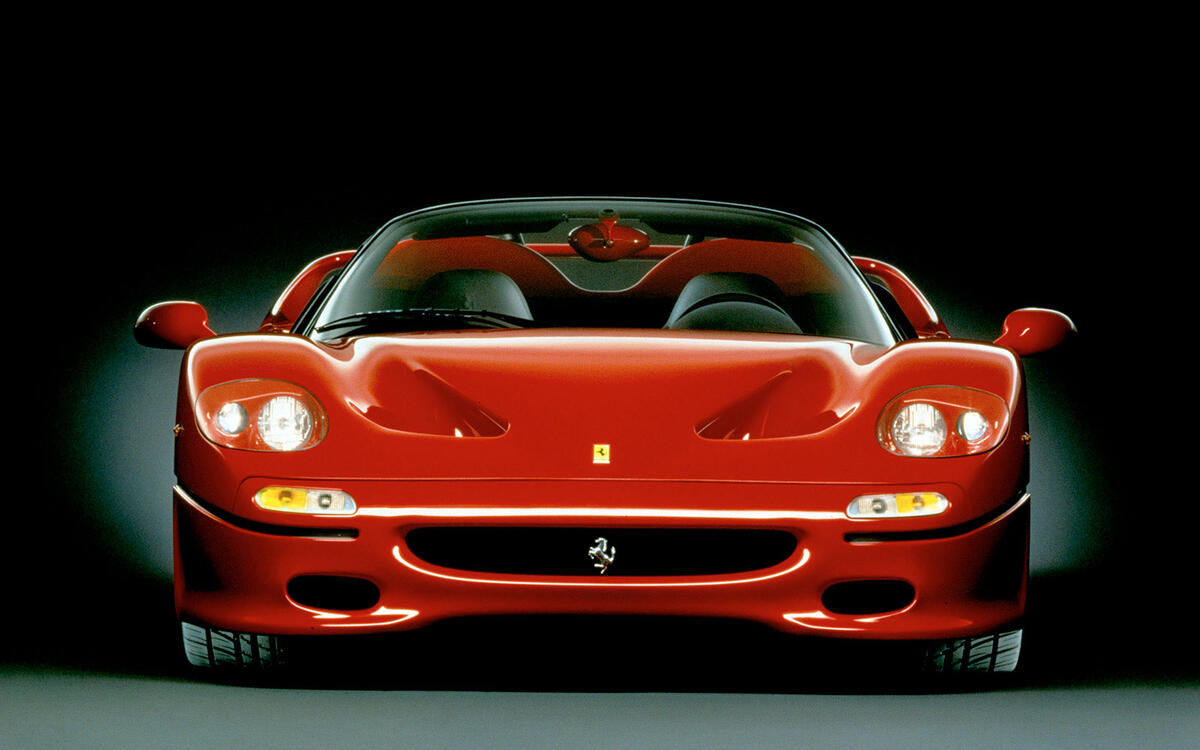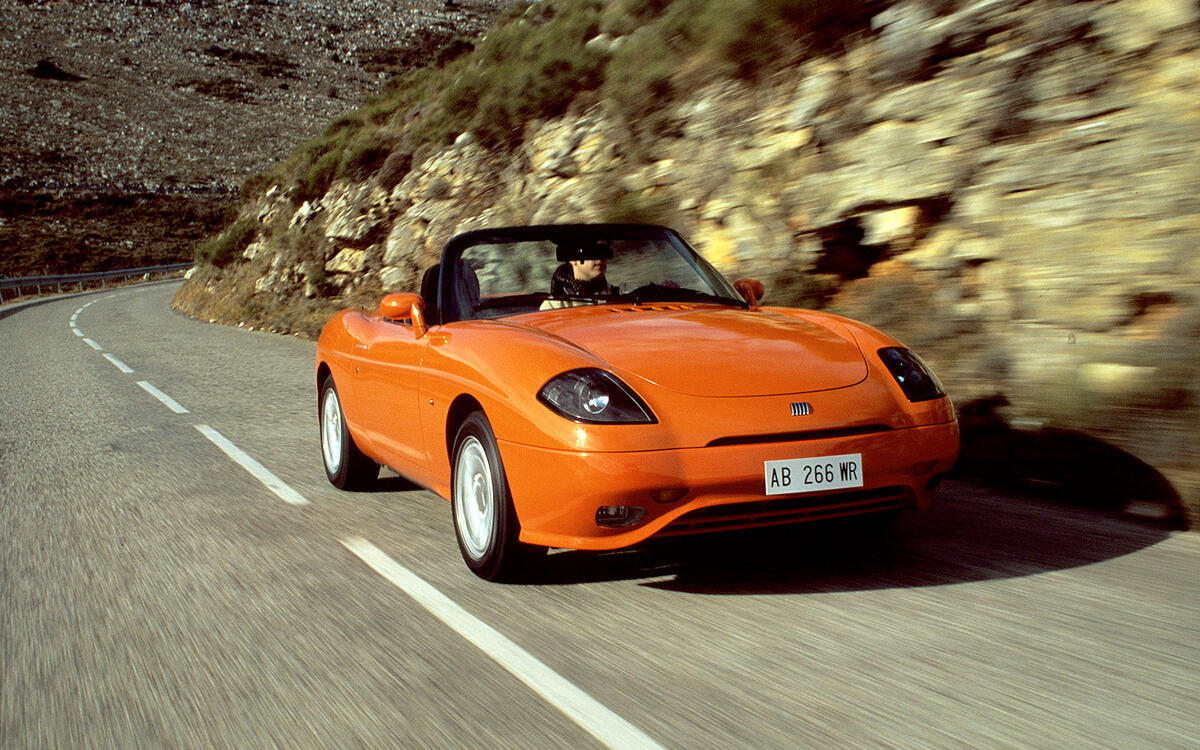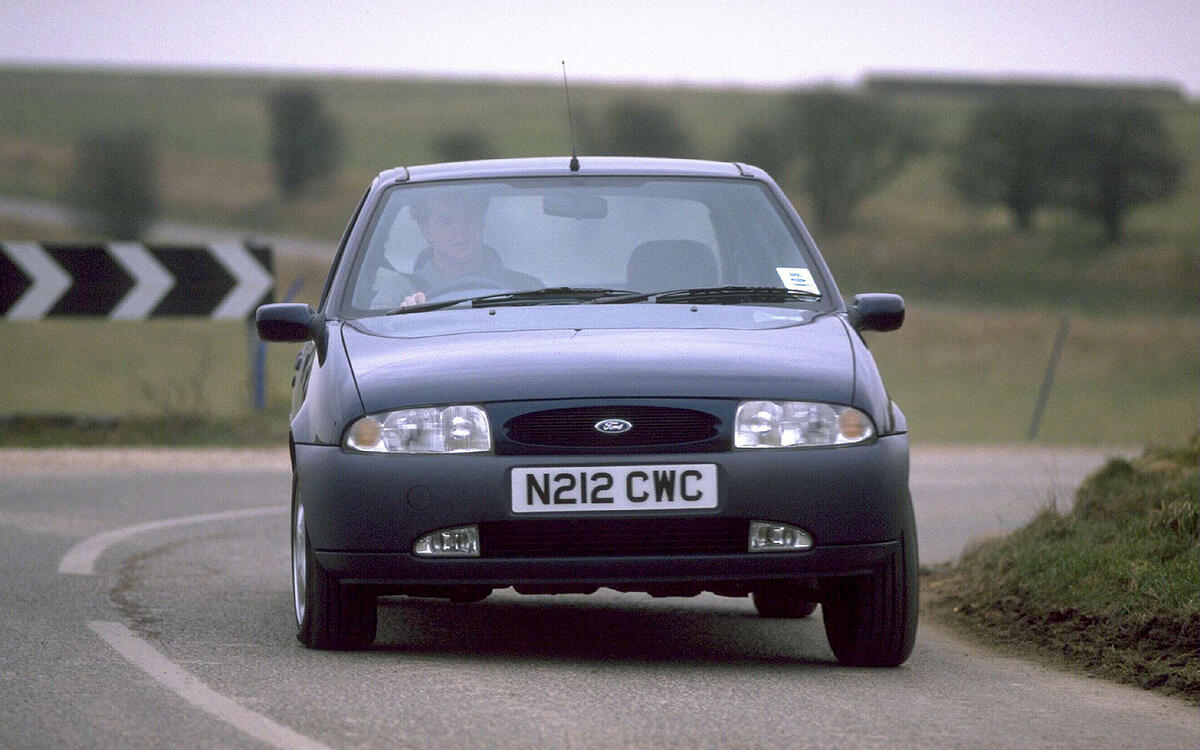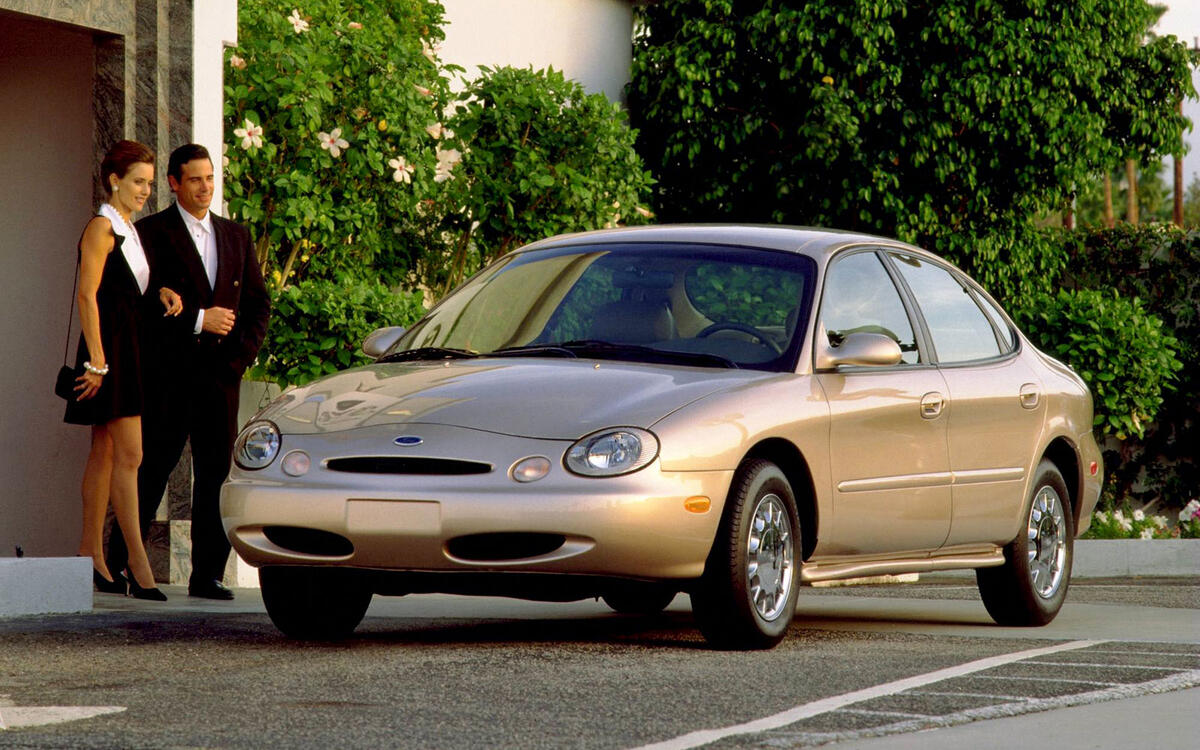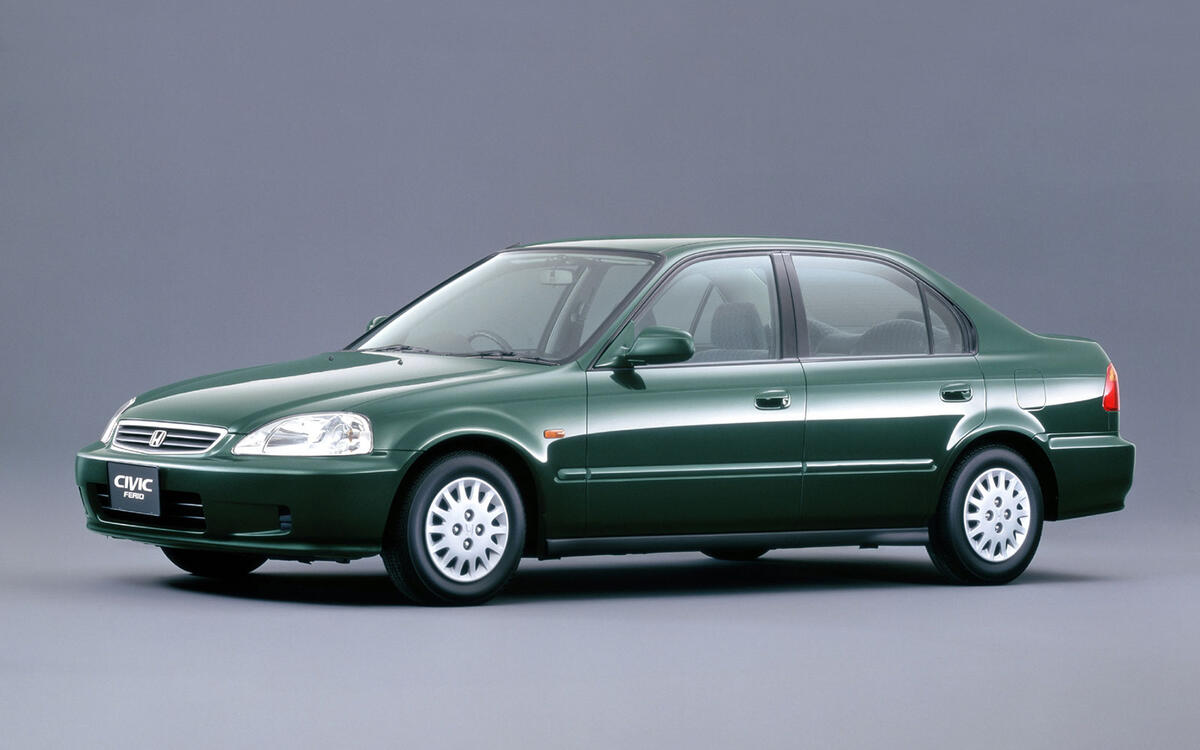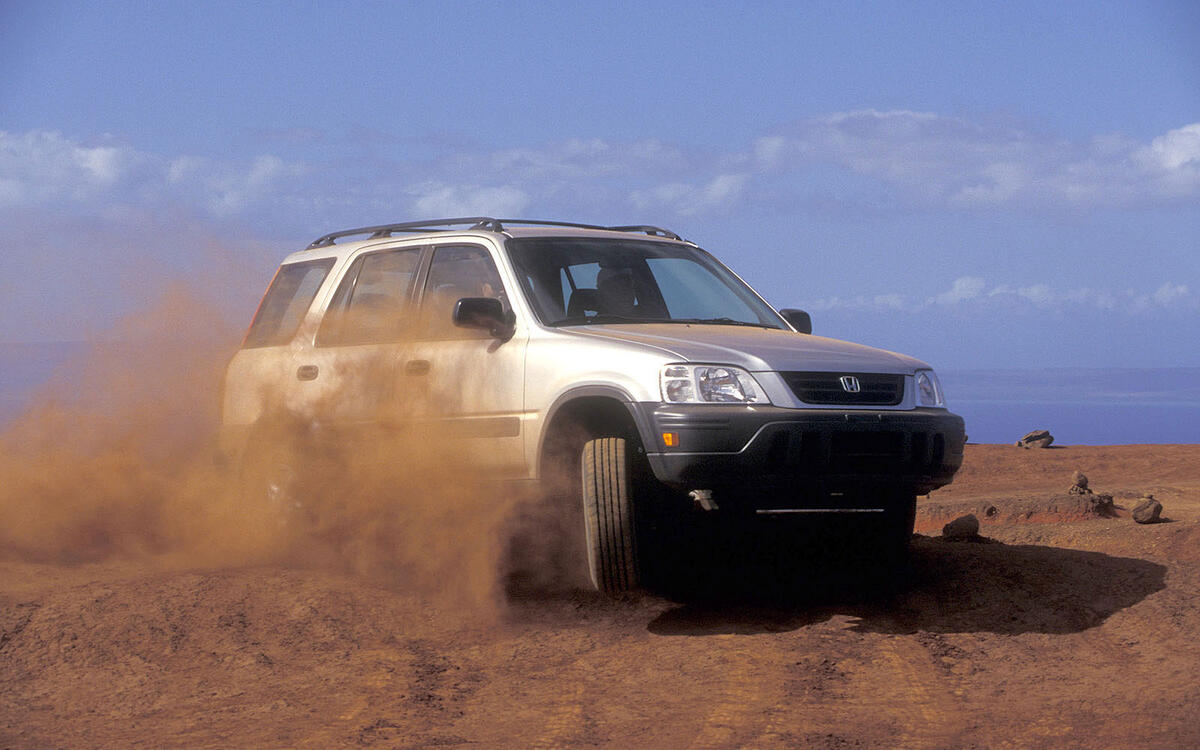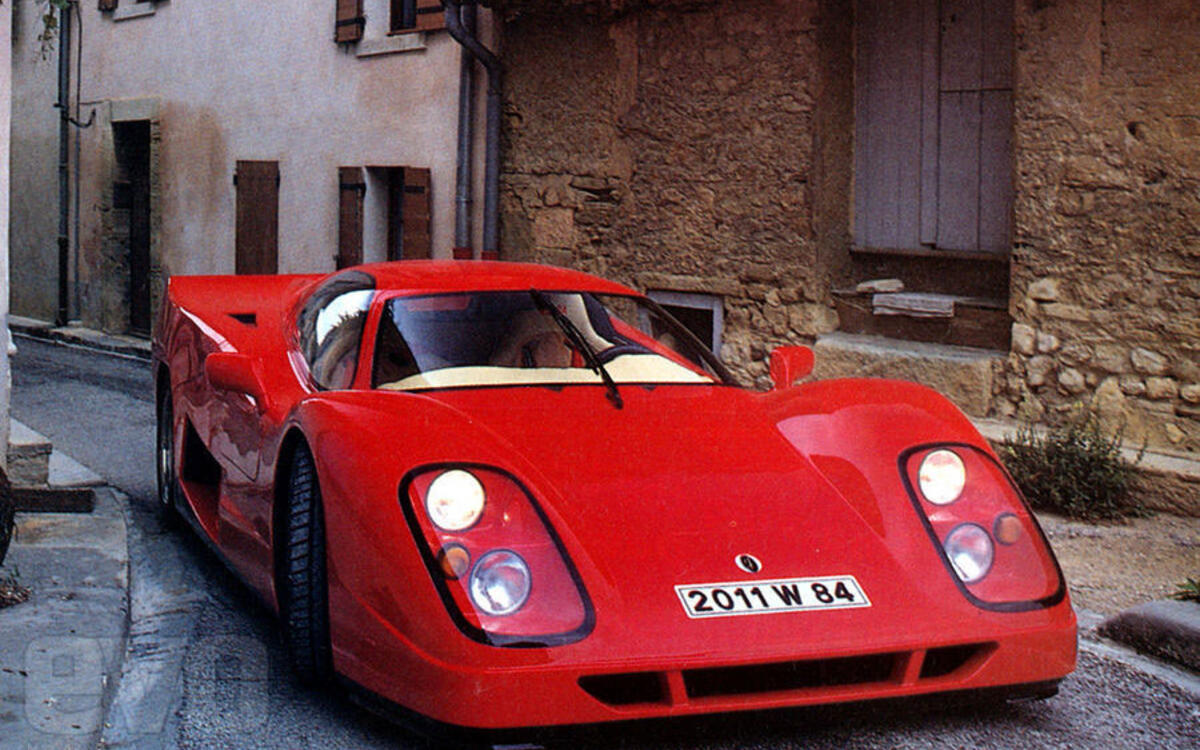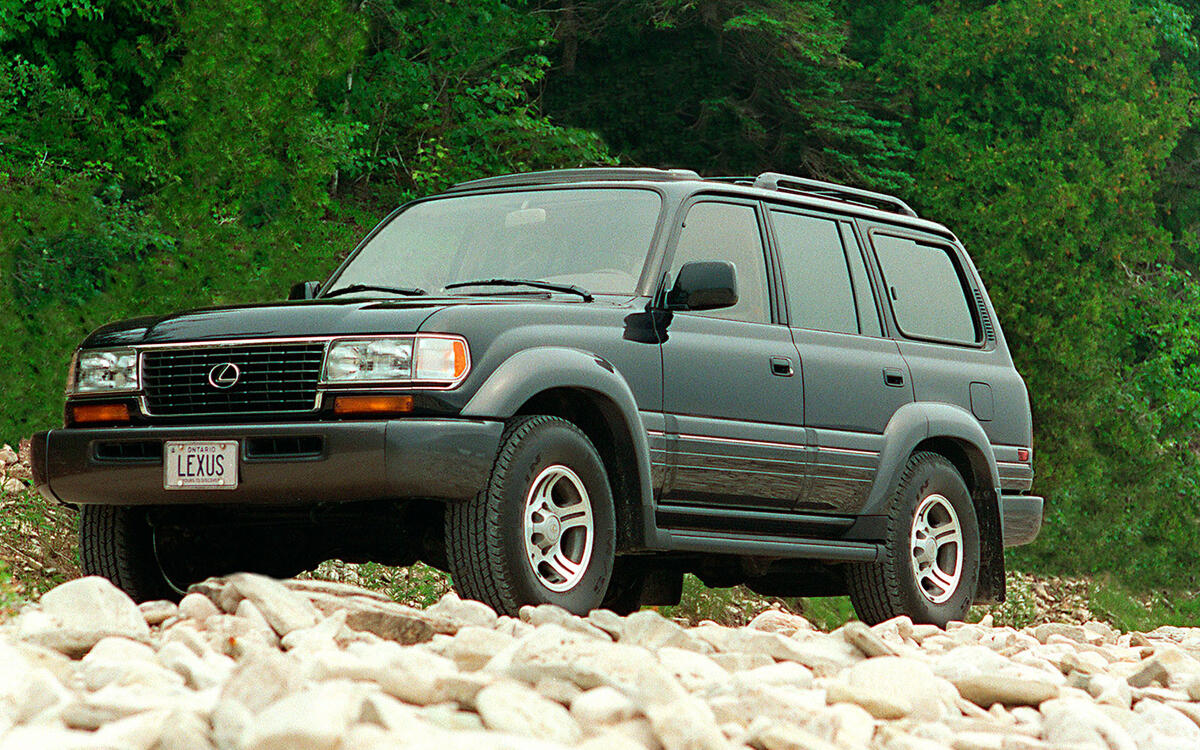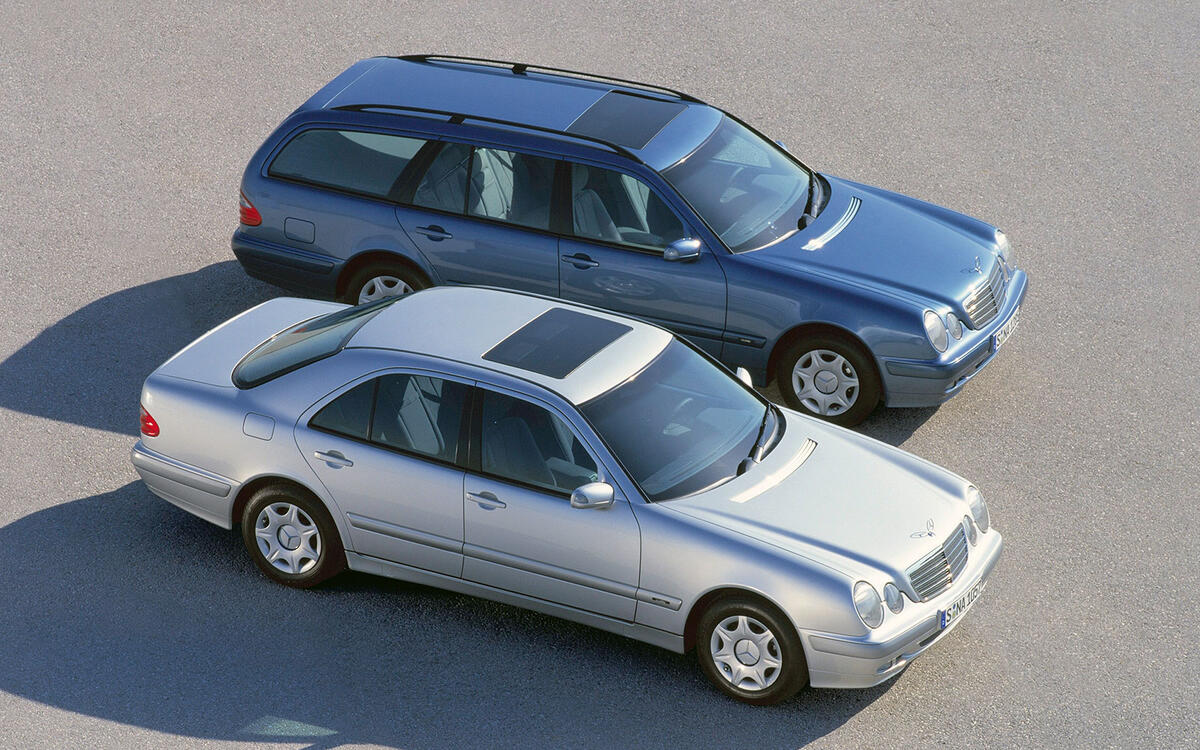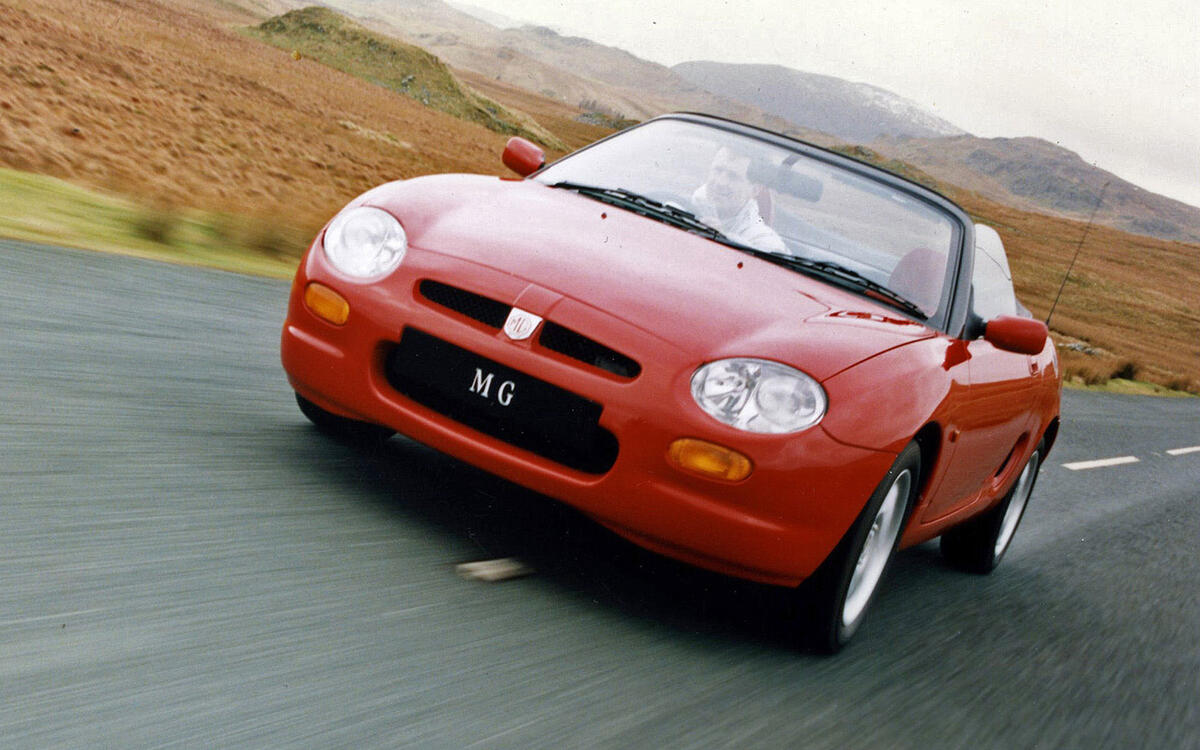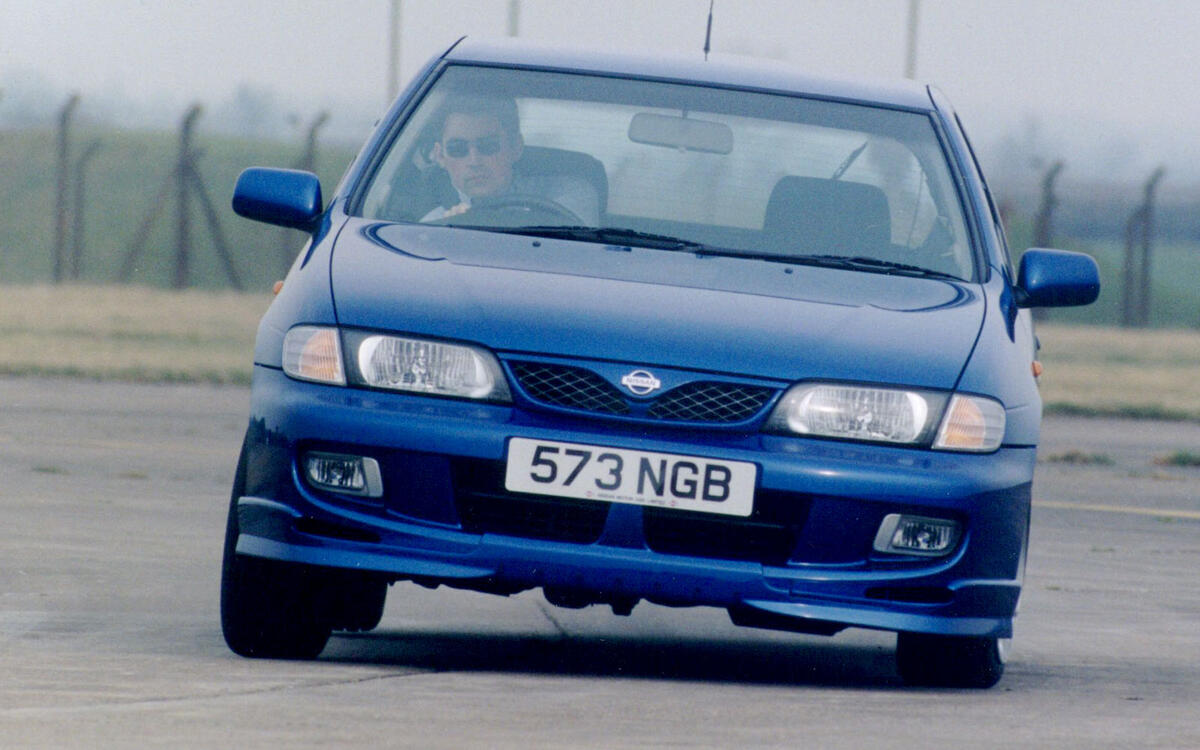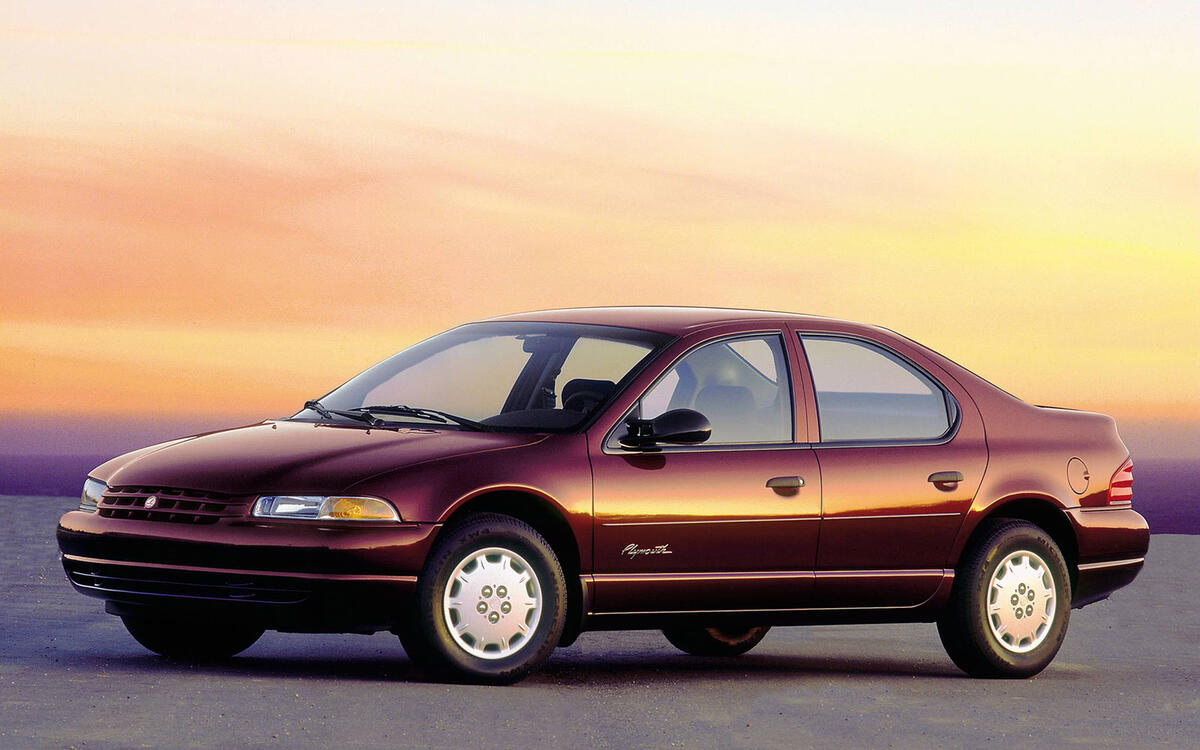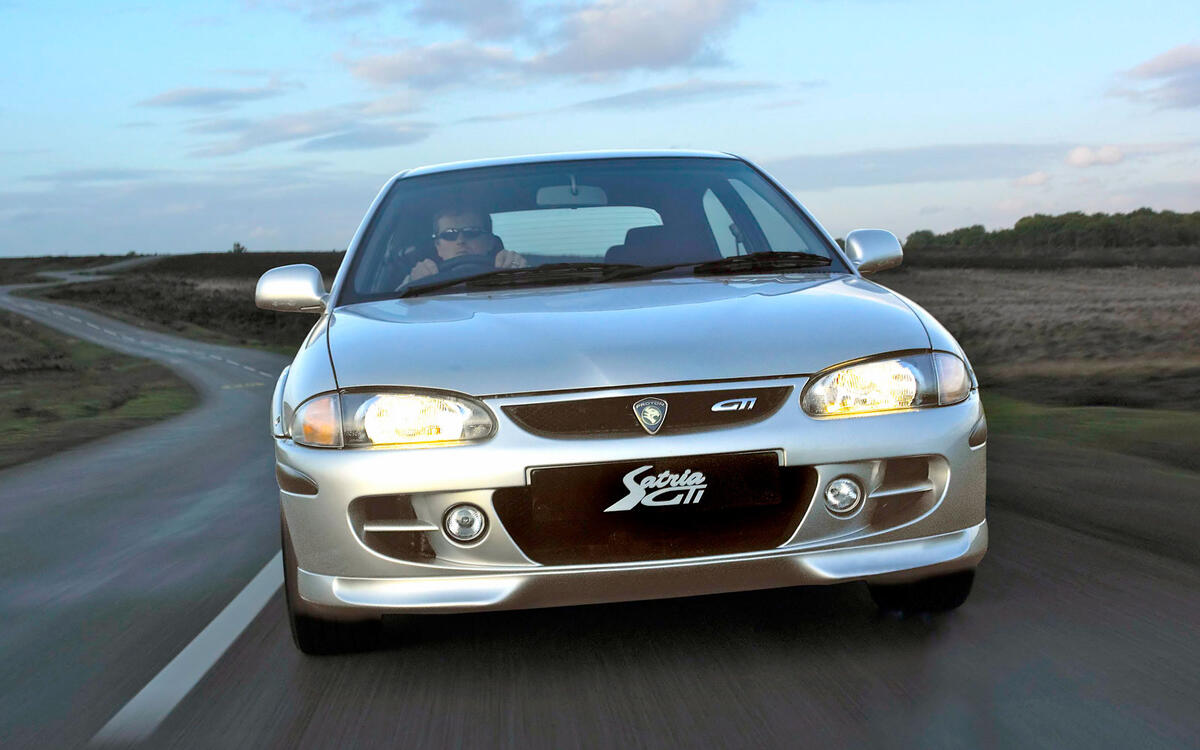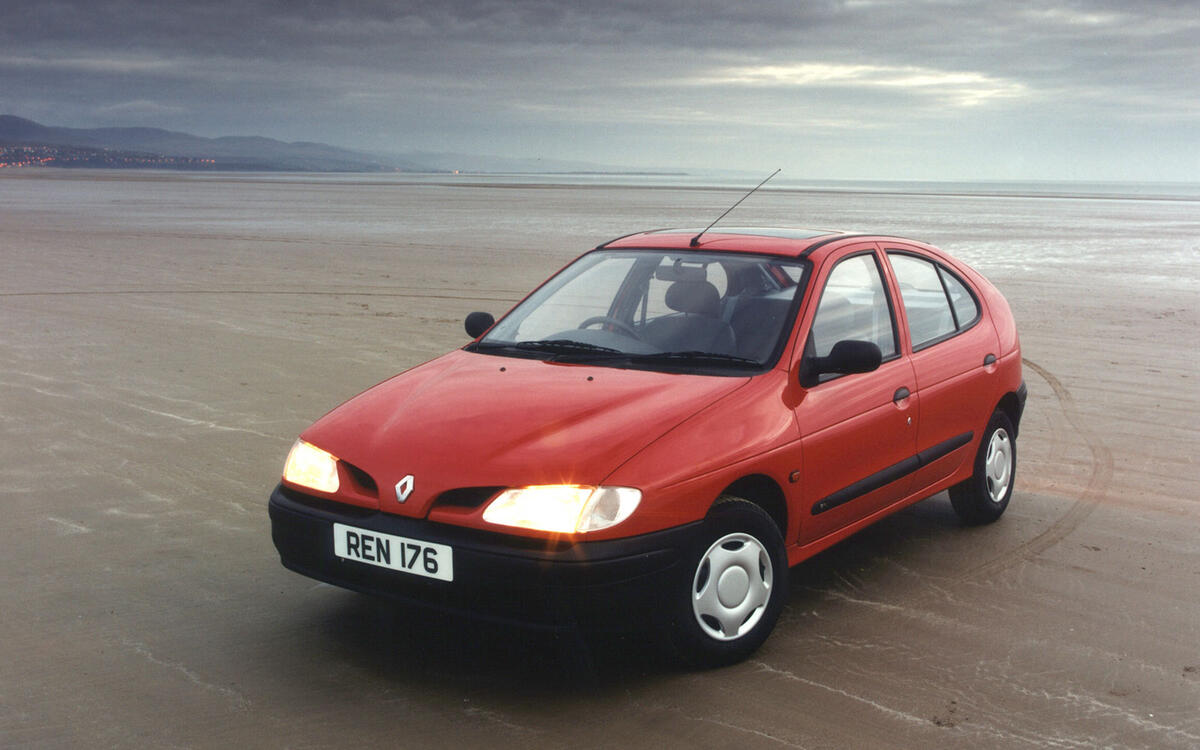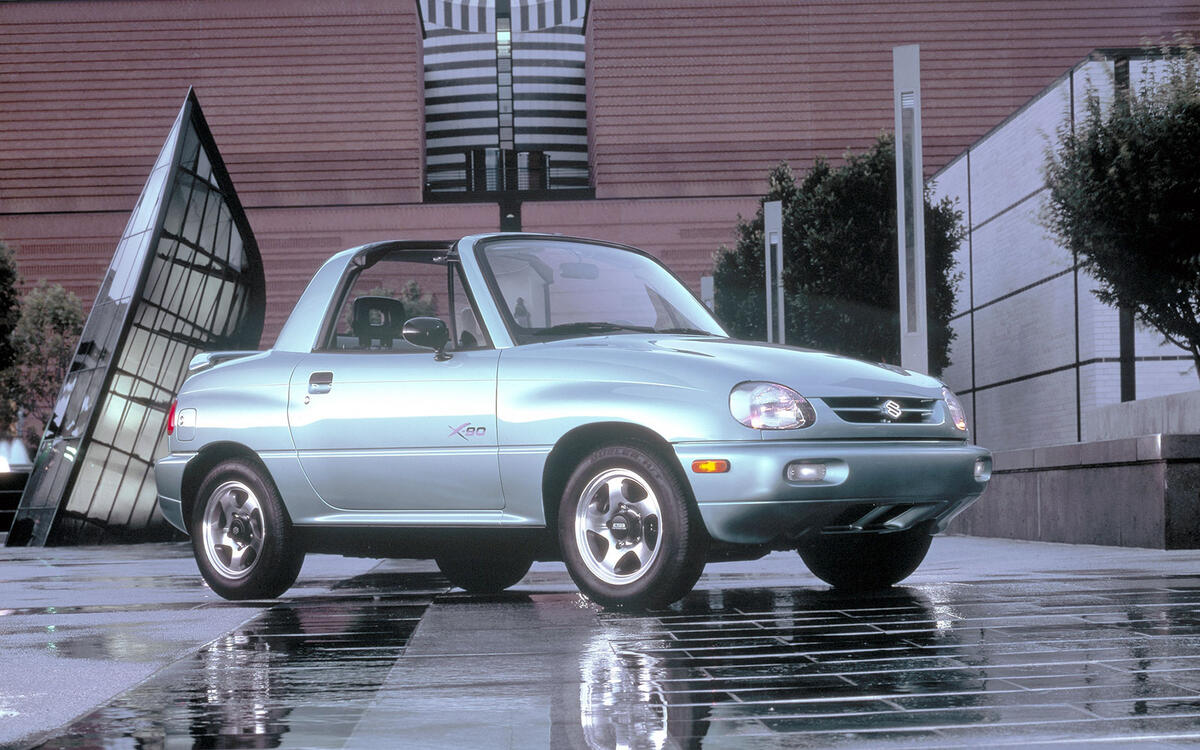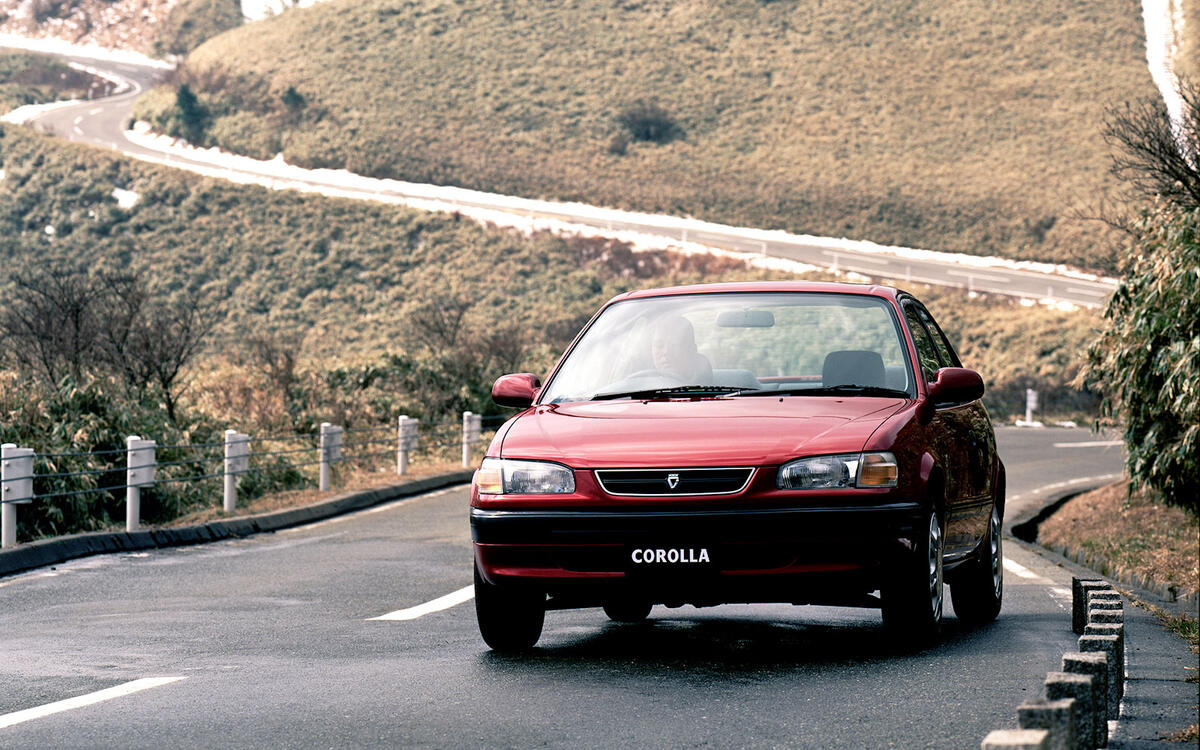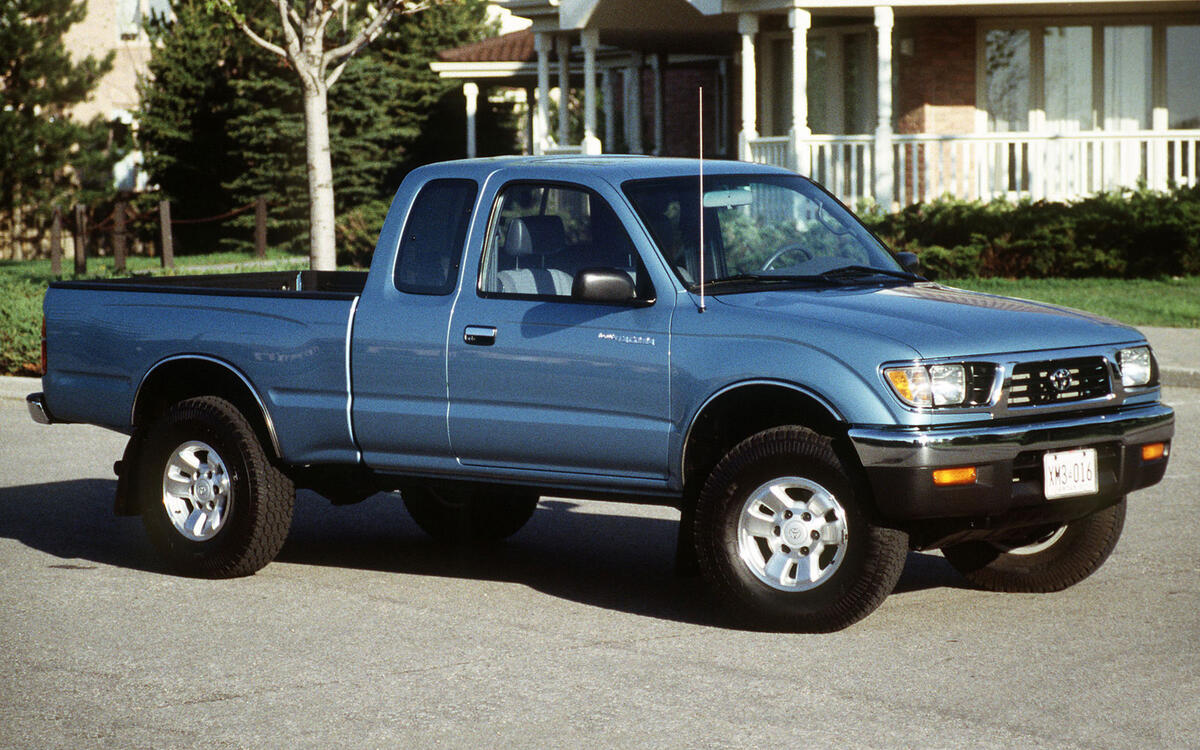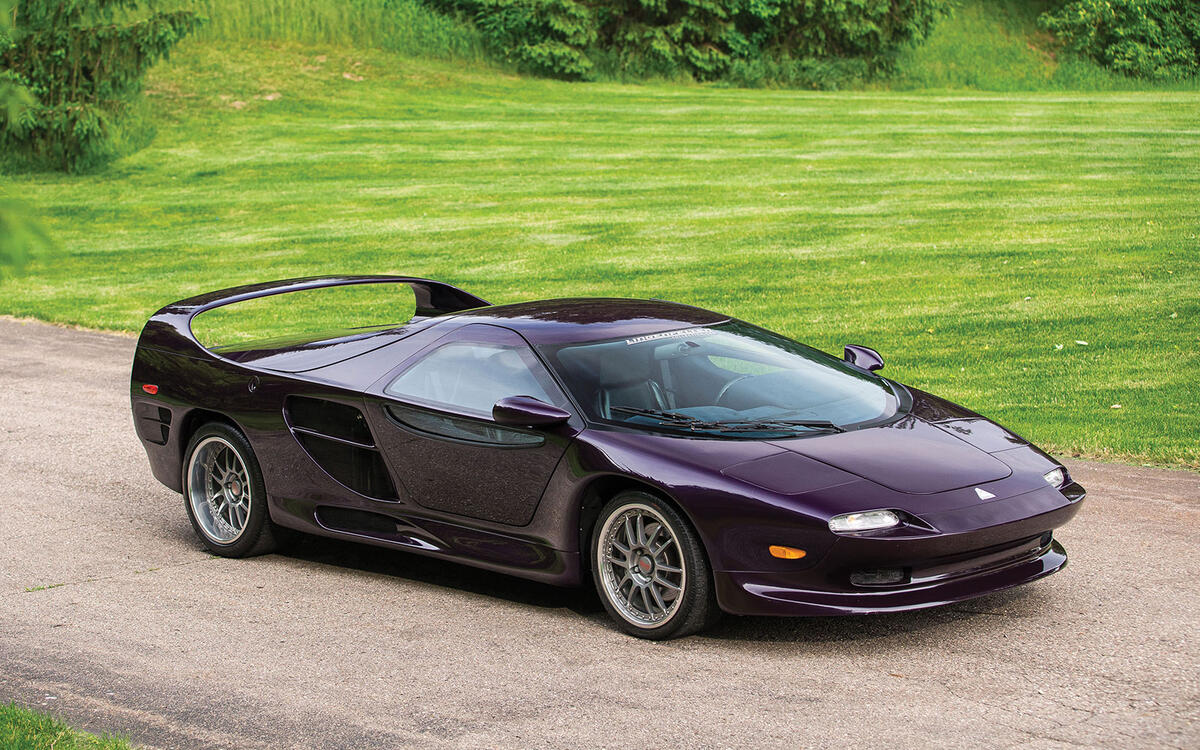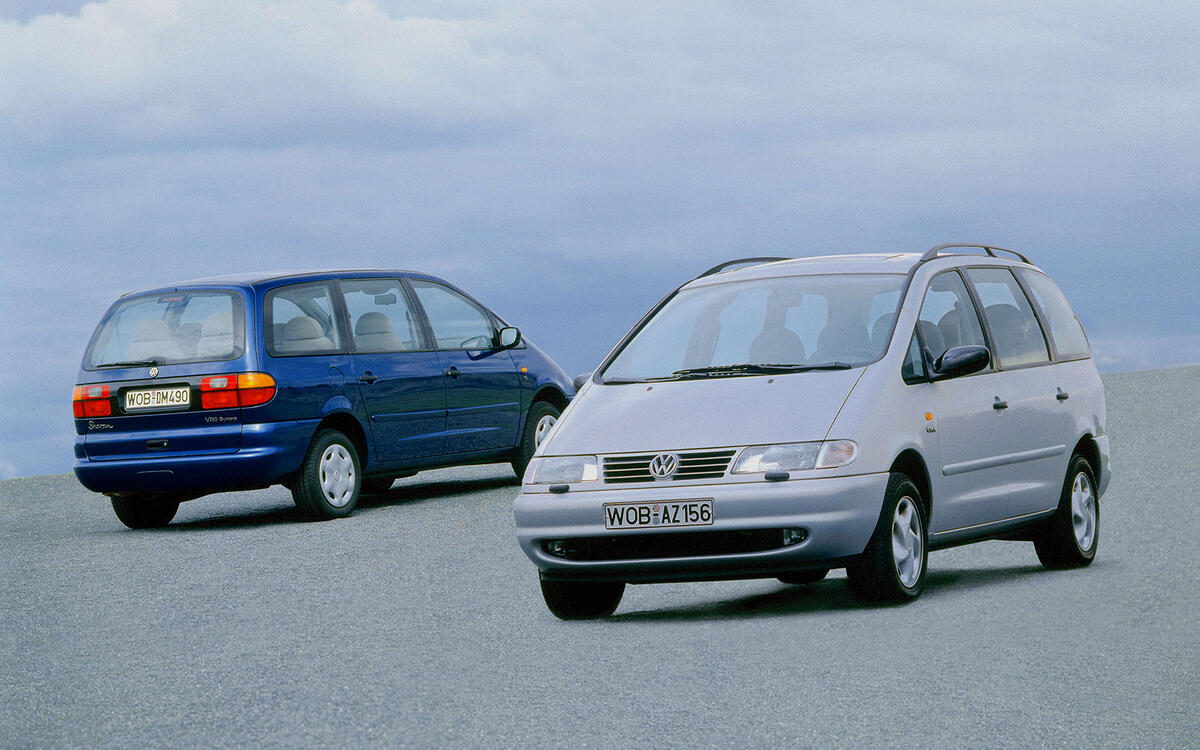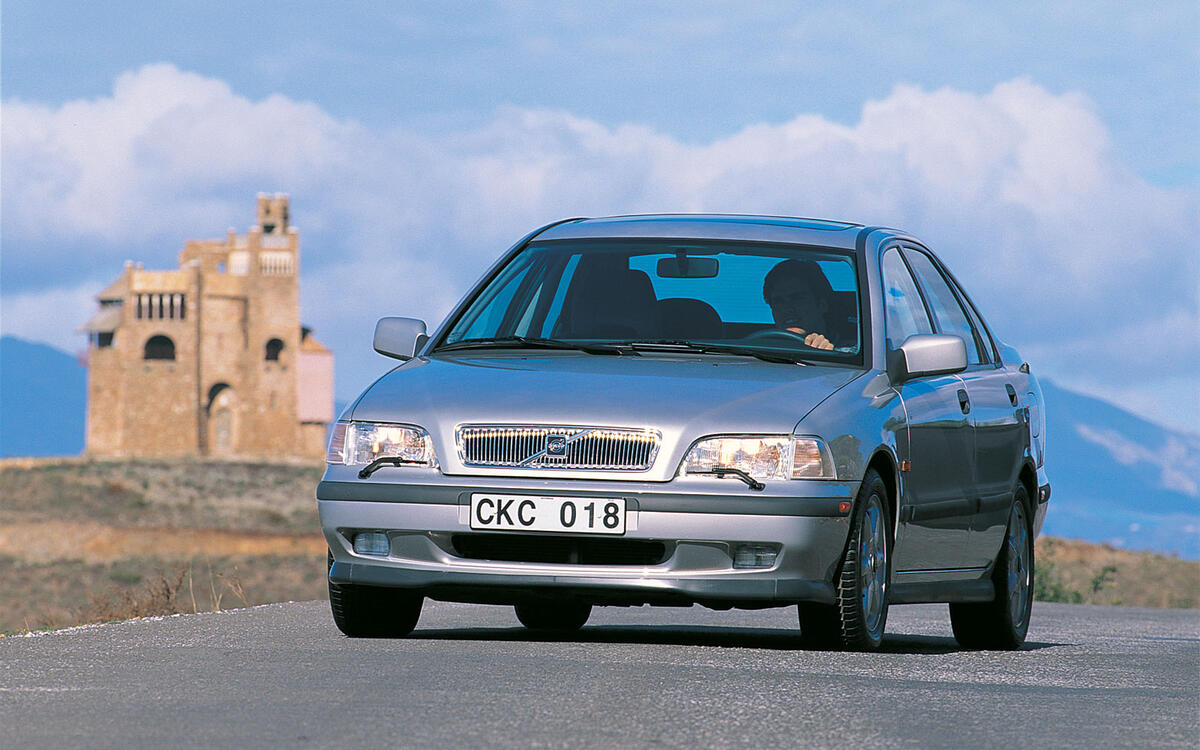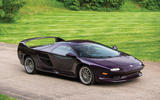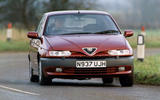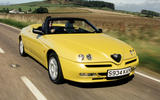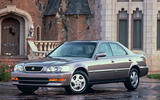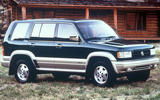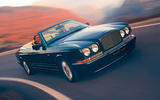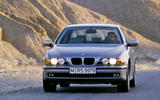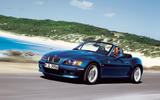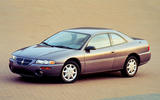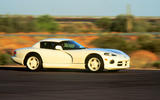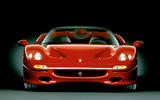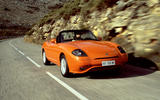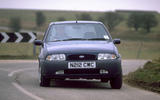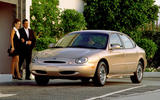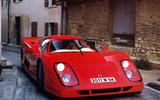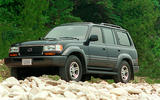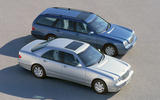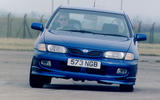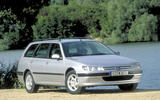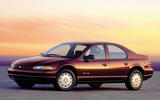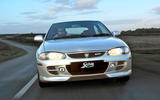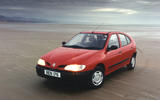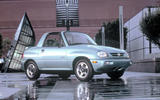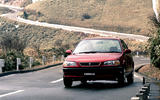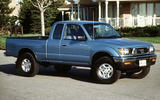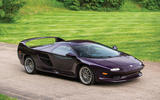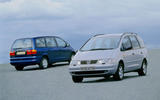 Slide of
Slide of
Sorry to scare you, but all of the cars here celebrated their 25th birthday this year.
That's right – it's already a quarter of a century since these cars first hit the road. Some have gone on to be sought-after modern classics while others have disappeared into obscurity. We'll leave you to decide which cars belong in which group…
Slideshow story - please click the right-hand arrow above to continue
 Slide of
Slide of
Alfa Romeo 146
Following on from the launch of its 145 sibling the previous year, the Alfa Romeo 146 picked up where the 33 left off. Whereas the 145 featured three doors and an upright estate-like rear end, the 146 was a five-door hatch that looked much more awkward with its styling – but it still proved to be the bigger seller of the two. Both cars were powered by an array of four-cylinder petrol and diesel engines.
 Slide of
Slide of
Alfa Romeo GTV/Spider
Alfa Romeo had a busy year in 1995, as its Type 916 GTV and Spider were launched in the spring of that year, at the Geneva Salon. Looking like nothing else before or since, the front-wheel drive 916 came with a choice of twin-spark four-cylinder engines or a fabulously fruity 3.0-litre (later 3.2) V6. As with all nineties Alfas, the build quality was suspect but decent survivors have become very collectible.
 Slide of
Slide of
Acura TL
Honda was the first to launch a spin-off luxury division for the US market, with Acura, which appeared in 1986 – three years before Nissan’s Infiniti and Toyota’s Lexus arrived. Almost a decade after Acura's debut the TL (Touring Luxury) saloon was launched with a choice of five- and six-cylinder engines and only an automatic transmission.
 Slide of
Slide of
Acura SLX
While the TL saloon was worthy of the Acura brand, the SLX most definitely was not. It was little more than a lightly refreshed Isuzu Trooper, an SUV that had been criticised for its tendency to fall over all too easily. Not the best attribute for a luxury vehicle to have…
 Slide of
Slide of
Bentley Azure
The Continental R coupé of 1991 was the first Bentley since 1965 to not have a Rolls-Royce equivalent, and it would take another four years for the open-topped version to arrive. Engineered by Pininfarina and called the Azure, this glorious four-seater was as luxurious, classy, refined and expensive as you'd expect. As always, power came from Crewe's legendary 6.75-litre V8.
 Slide of
Slide of
BMW E39
The fourth-generation 5 Series was a deeply impressive machine, as BMW knew it had to be if it was to compete with Mercedes' formidable E-Class. In 1995 only the E39 saloon was unveiled; in typical BMW fashion the estate arrived the following year. Buyers could select from a wide array of petrol and diesel engines with four, six or eight cylinders, the latter in the gloriously understated 540i.
 Slide of
Slide of
BMW Z3
In the mid-1990s a raft of all-new two-seater convertibles arrived on the scene and one of the most hotly anticipated was the BMW Z3, partly because of its brief role in the James Bond film Goldeneye, partly because it looked so appealing and partly because it was a BMW. We were left rather deflated at first as the Z3 wasn't as good to drive nor powerful as we'd hoped, but the M Roadster salvaged things when it arrived in 1998. Now the Z3 makes a fine affordable modern classic.
 Slide of
Slide of
Chrysler Sebring
Taking over where the Chrysler LeBaron left off, the Sebring was launched in coupé form in 1995, based on the same platform as its Cirrus saloon sibling; the following year a Sebring convertible would also make its debut. Buyers could choose between four- and six-cylinder engines and five-speed manual or four-speed automatic transmissions.
 Slide of
Slide of
Dodge Viper
One of the most 'out-there' cars went on sale in 1991: the original Dodge Viper, known as the SR I. A heavily revised car appeared just four years later, known as the SR II and still fitted with the original Viper's 8.0-litre V10 engine, tuned to give 415bhp and 488lb ft of torque. For those who felt this was a bit lacking there was still an RT/10 option (pictured), which boosted the power to 450bhp.
 Slide of
Slide of
Ferrari F50
You'll pay plenty now for one of the fantastically collectible Ferrari F50s, but when it was launched it was a bit underwhelming after the manic F40, which still ranks as one of the all-time brilliant road cars. Whereas the F40 got a turbocharged V8, the F50 featured a naturally aspirated 3.5-litre V12 rated at 512bhp, which provided a top speed of over 200mph. The F50 is far rarer than its predecessor though, with just 349 examples made compared with 1315 F40s.
 Slide of
Slide of
Fiat Barchetta
As well as the now-forgotten Bravo and Brava hatchbacks, Fiat also introduced the much more appealing Barchetta in 1995. Built with left-hand drive only, despite official sales in the UK, the Barchetta looked sportier than it really was, with its 1747cc Punto-derived engine and five-speed manual gearbox.
 Slide of
Slide of
Ford Fiesta Mk4
Ever since the first Fiesta was launched in 1976, Ford has proved that you don't have to spend big to have enormous fun behind the wheel. Dynamically a class leader for much of its life, the Fiesta was perhaps at its low point aesthetically in Mk4 form, with its droopy, sad face, but it was still a hoot to drive, affordable and offered practicality galore – which is why it was Britain's biggest-selling car until the Focus came along in 1998.
 Slide of
Slide of
Ford Taurus
The original Ford Taurus was launched in 1985; a decade later the third-generation model was rolled out. After the conventional first two editions, the all-new Taurus Mk3 was much more controversial with its mass of curves that almost made it look like a toy car. Thanks to lots of discounted fleet orders Ford managed to keep the Taurus flying high in the sales charts, but the car wasn't as profitable as Ford would have liked which is why the Taurus Mk4 that arrived in 1999 looked much more conventional.
 Slide of
Slide of
Honda Civic Mk6
When the original Honda Civic arrived in 1972 it was revolutionary for its maker and its ultra-clean petrol engine was deeply impressive within the wider market. By the time the sixth-generatiion Civic appeared in 1995 it was less impressive but it was still incredibly reliable and easy to drive, ensuring that it was a hit in its home market as well as on both sides of the Atlantic. More significantly, it was this car that would kick off Honda's legendary Type R line-up – albeit initially only in its home market.
 Slide of
Slide of
Honda CR-V
Suzuki introduced the Vitara in 1988 and the Toyota Rav4 arrived six year later, so the Honda CR-V (Comfortable Runabout Vehicle) was hardly revolutionary. But it was just what the market wanted, with its Civic underpinnings, raised seating position and frugal four-cylinder engines. Production would last until 2001, although after this first generation there would be another four. So far…
 Slide of
Slide of
Jiminez Novia
The Jiminez Novia packed a 560bhp 4.1-litre W16 engine that was essentially four Yamaha motorbike engines stitched together, and if you're wondering why you can't quite place it, that'll be because just the one was made. Frenchman Ramon Jiminez planned to put the Novia into production but the homologation costs were too steep so it never happened.
 Slide of
Slide of
Lexus LX
Although the Lexus LX wouldn't go on sale until January 1996, it was first shown in November 1995, so it just qualifies to sneak in here. Little more than a lightly rehashed Toyota Land Cruiser, the original Lexus LX came only with a 4.5-litre straight-six petrol engine mated to a four-speed automatic transmission, but later LXs would get V8 power instead.
 Slide of
Slide of
Mercedes E-Class (W210)
The original Mercedes E-Class was the bomb-proof W124 that was introduced in 1986. Massively over-engineered, the W124 set a standard that sadly the W210 failed to follow. Indeed the second-generation E-Class was a seriously retrograde step in terms of quality, even if it came with an impressive set of engines and transmissions. So it was a shame that the bodywork dissolved while the running gear continued to perform perfectly.
 Slide of
Slide of
MG F
This was a car that was many years overdue as it was the first all-new two-seater roadster from MG, since the B roadster of 1962. The MGF was a brilliant car with its zesty K-Series mid-mounted engine, and brilliant handling thanks to Hydragas suspension. But these two things would be the MGF's undoing as they both failed leading to a reputation for poor reliability. Both are eminently fixable now, ensuring the MGF is an affordable modern classic.
 Slide of
Slide of
Nissan Almera
Sold as the Pulsar in its home market, the Nissan Almera was a pretty decent family hatch in its day, even if it wasn't the most inspiring contender in the segment. Good to drive, well equipped and reliable, the Almera was perfect for those on a budget, while those who wanted a bit more zip could snap up a 2.0 GTi (pictured) from 1998, which was a far better steer than the Almera's reputation would have you believe.
 Slide of
Slide of
Peugeot 406
Some cars simply refuse to date in the looks department, and the Peugeot 406 is one of them – especially if you include the gorgeous coupé edition that arrived in 1996. Remove that from the equation though and the 406 saloon and estate of 1995 still look far more handsome than most of the Peugeots that followed. The final 406s were sold in Europe in 2004, and there are thousands of them still trundling about, cutting a dash.
 Slide of
Slide of
Plymouth Breeze
At the end of 1994 Chrysler launched its Cirrus saloon and in true Chrysler form, the following year the badge-engineered Plymouth Breeze arrived, to supersede the Acclaim. There would also be another badge-engeineered edition, the Dodge Stratus, but it was the Plymouth that was the value (ie poverty-spec) option, which is why it came only with four-cylinder engines while its cousins got a V6 option.
 Slide of
Slide of
Proton Satria
Malaysian company Proton has never had have much to offer the enthusiast driver, but there was a time when it owned Lotus, perhaps the most prolific company ever when it comes to developing and producing exciting driving machines. As a result, while the Satria that was introduced in 1995 is one of the most forgettable cars in the history of motoring, it became a true great once the team from Lotus had got their hands on it to come up with the Satria GTi (pictured).
 Slide of
Slide of
Renault Megane
It seems incredible that it's already a quarter of a century since the original Renault Megane was launched – a car that was a big advance over its lacklustre predecessor the 19. Buyers could choose between coupé, hatchback, saloon, convertible and estate derivatives with a huge array of engines and the car sold well. Where did it all go so wrong for the Megane since then…?
 Slide of
Slide of
Suzuki X-90
A guaranteed entry in every ‘rubbish cars’ book ever published, the Suzuki X-90 arrived in 1995 and had been axed by the end of 1997. It died completely unmourned, on account of its mediocre performance, even more mediocre driving experience, awkward design and limited usability, all of which fitted in perfectly with its below-par interior design and execution.
 Slide of
Slide of
Toyota Corolla
The biggest-selling automotive nameplate of all time, the first Corolla went on sale in 1966 and by 1995 Toyota was unveiling the eighth take on the formula. Based heavily on the Corolla Mk7 to cut costs, the Mk8 was offered with a variety of four-cylinder petrol and diesel engines, none of which offered anything for the enthusiast. Still, catering for the masses has hardly done Corolla sales any harm…
 Slide of
Slide of
Toyota Tacoma
The Toyota Hilux is nothing less than an icon, but for many it focuses on utility too much, and for many US buyers an emphasis on comfort is more important. Toyota's solution was to use the Hilux as the basis for an all-new model range, which arrived in 1995 as the Tacoma. Offered with a choice of four- and six-cylinder petrol engines, the Tacoma was more stylish than its Hilux sibling and as a result it sold well. Toyota's ploy had worked.
 Slide of
Slide of
Vector M12
One day somebody will produce a Hollywood blockbuster based on the true story of Gerry Wiegert and his company Vector Aeromotive. The company was founded in 1971 and it's still going, yet it has produced just a handful of cars, including a claimed 17 examples of the Lamborghini V12-engined M12. Designed by Peter Stevens, the M12 was stylistically an evolution of the WX-3, which in itself was a development of Vector's first car, the W8.
 Slide of
Slide of
Volkswagen Sharan
MPVs have become deeply unfashionable now thanks to the rise of the SUV, but in the 1990s they were all the rage, which is why Ford and Volkswagen collaborated to produce this cracker of a people mover. Also sold as the SEAT Alhambra (and the original Ford Galaxy), the VW Sharan came with a cracking range of petrol and diesel engines, and it proved to be a big hit with buyers thanks to its unparalleled versatility and practicality.
 Slide of
Slide of
Volvo S40/V40
Among the most boring cars ever created, the Volvo S40 saloon and its V40 estate sibling were closely related to the ironically named Mitsubishi Carisma – a car utterly devoid of personality. In typical Volvo fashion the S40 and V40 were safe, but depressingly uninspiring to drive, even if they did look reasonably handsome. The pair sold pretty well though, averaging more than 100,000 sales each year over the nine years that they were in production.
We turn the clock back to look at the interesting cars that debuted a quarter of a century ago
Advertisement


